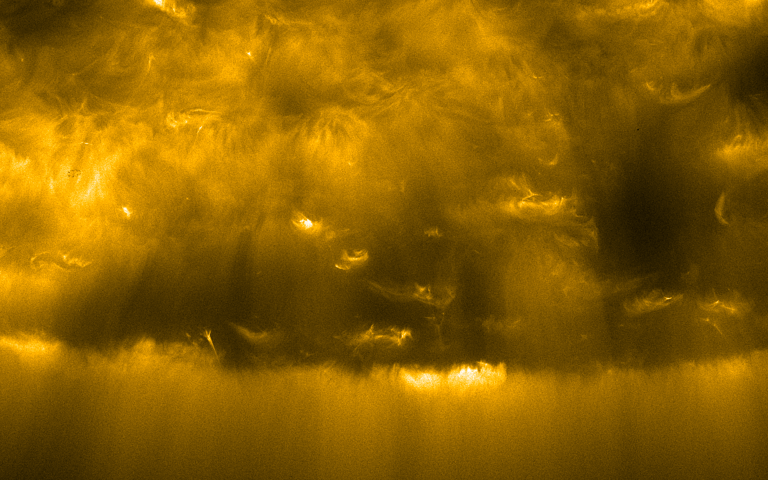Solar Orbiter, a European Space Agency (ESA) spacecraft carrying instruments proposed, designed and built at UCL, has had its closest approach yet to the Sun, providing breathtaking images and movies of the solar poles, of powerful flares, and of a curious solar "hedgehog".

The close approach to the Sun, known as perihelion, took place on 26 March. The spacecraft was inside the orbit of Mercury, at about one-third the distance from the Sun to the Earth, and its heatshield was reaching around 500°C. But it dissipated that heat with its innovative technology to keep the spacecraft safe and functioning.
Solar Orbiter carries ten science instruments, all working together in close collaboration to provide unprecedented insight into how our local star "works". UCL scientists have a leading role in two of them - the Extreme Ultraviolet Imager (EUI), a suite of telescopes providing images of the hot and cold layers of the Sun's atmosphere and corona, and the Solar Wind Analyser (SWA).
One eye-catching feature observed by the EUI instrument during this perihelion has been nicknamed "the hedgehog" (image, top, and video below). It stretches 25,000 kilometres across the Sun and has a multitude of spikes of hot and colder gas that reach out in all directions.






